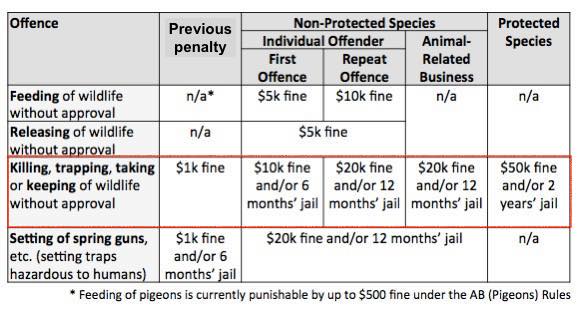When I feel threatened, I'll bite back.
Not literally, most of the time it can come in the form of an email or a harsh text these days.
But what I'm trying to say is that it's mere animal instincts to adopt a fight or flight mentality when one faces a threat.
For a python, it can either strangle its aggressor (or prey) to death or bite.
I'm sure if it has four limbs, a python would also prefer to throw punches back at the men who came at it at Boon Lay Place Market, like in any kopitiam fights. Or it would call the police, if only it can.
The point that I'm trying to make is, it's normal for pythons retaliating when they are attacked or threatened. That's what happened at Boon Lay Place Market last week.
However, pythons are not naturally aggressive.
Older folks might have close encounters with pythons during the kampong days when these apex predators could have killed people or the animals that villagers reared. That would have created a negative impression about snakes.
Even then, not all kampong dwellers had bad experiences with pythons.

Pop culture has villianised snakes so much that the fear towards them has been deeply ingrained in us.
Why killing is unnecessary?
Here's what National Parks Board (NParks) says about snakes:
"Snakes are generally shy creatures and will usually try to slither away from humans. Snakes are generally not aggressive and will not attack unless they are disturbed or provoked. If you do see a live snake, do keep calm and keep a safe distance."
There were also many instances in recent years to prove that NParks is right, and snakes are highly misunderstood creatures.
For example, this woman successfully saved a duck from a python in Bukit Timah, without killing or severely injuring it.
That said, perhaps the woman should have just let nature take its course and let the python have its meal.
But we digress.
Here's one of the many times when the wildlife rescue team from Animal Concerns Research and Education Society (Acres) removed a python from a drain in Queenstown.
And no one was hurt.
If you really need one more positive example of how pythons can be removed without resorting to violence, here it is.
A teacher from Commonwealth Secondary School learnt how to rescue wild animals from Acres, rescued a juvenile python and even used it to teach Biology in class back in 2020.
All these examples go to show that even if you don't like pythons, you don't have to kill them.
Those who are aware of such rescues or humane removals will naturally feel angry over what happened at Boon Lay Place Market.
The men inflicted pain by kicking the python, and grabbing its tail which left it with no way to escape before butchering it with a cleaver and cheering about it.
We have enough past examples to show that heroes don't need to act gung ho.
What happened at Boon Lay Place Market was plain cruelty.
Why bother?
Well, some people may think: What's the big deal?
If we can look past pythons as a menace, pythons and other snakes control rodents' population. They are natural pest controllers.
Pest controllers? Aren't pythons pests?

For those who compare pythons to cockroaches like this commenter, here's the difference.
Cockroaches are pests because they move about freely, from garbage bins to houses, and can carry germs which pose health risks to human beings. Pythons, on the other hand, prefer not to come near humans.
For a python to appear in a market place, which can get crowded during the day, we can look at the possible factors.
It's either due to the loss of habitats that forces them out of their comfort zone or they can be drawn to the rodents (which are food to them) in the market.
Here's another python who enjoyed finding these easy preys at a market:
Snakes are an important part of the ecosystem, regulating the populations of smaller mammals and birds in the wild.
Because of their love for rodents and their size, reticulated pythons end up becoming the most commonly spotted snake species in urban areas of Singapore, according to a local wildlife site.
Occasionally, they prey on community cats too, which can be heartbreaking for many who care and love the cats.
However, to the python, cats are just another prey or source of food.
While we hear about python sightings once in a while in Singapore, they are actually hard to observe in the wild as they either have "sedentary habits" or prefer to stay in areas where they are familiar with.
Reticulated pythons don't always have a bad rep, by the way.
According to National Museum of Singapore, reticulated pythons, being one of the longest living snakes, are associated with the afterlife to some islanders in Indonesia.
"A funeral shroud with python motifs called the hanggi ngoko accompanies deceased nobles to the next realm. Dyed cloths with python motifs called kain patola also serve as protective garments for sick children, vessels of holy water and royal figures."
It's a crime.
If nothing mentioned above explains to you why actions must be taken against those men who killed the python at Boon Lay Place Market, here's one: they (likely) committed a crime.
Under the Wildlife Act, it is an offence to "kill, trap, or take wildlife without the Director-General's approval".
Previously known as the Wild Animals and Birds Act, the Act was renamed and amended to include heavier penalties against offenders.

NParks is currently investigating the incident at Boon Lay Place Market.
Acres is also appealing for more information about the incident.
What to do if you encounter a snake?
I am not going to lie, I'm still trying to appreciate snakes better.
Do I want a python to come close to me? Nope.
But what I believe we can do is to live harmoniously with wild animals, including pythons, and to internalise the advice from those who really know these animals like NParks and Acres.
It starts with believing that pythons are shy creatures that rather stay away from us human beings.
If you ever come across a python or a snake, just remember to stay calm and move away.
Whenever necessary, call NParks’ Animal Response Centre at 1800 476 1600, or Acres at 9783 7782. They can advise you further or come to your rescue.
You can also read more about snakes and other wild neighbours of ours here.
Top image via video sent to Mothership
If you like what you read, follow us on Facebook, Instagram, Twitter and Telegram to get the latest updates.
